Nabil Farah
A Compact Size 5G Hairpin Bandpass Filter with Multilayer Coupled Line
Oct 07, 2021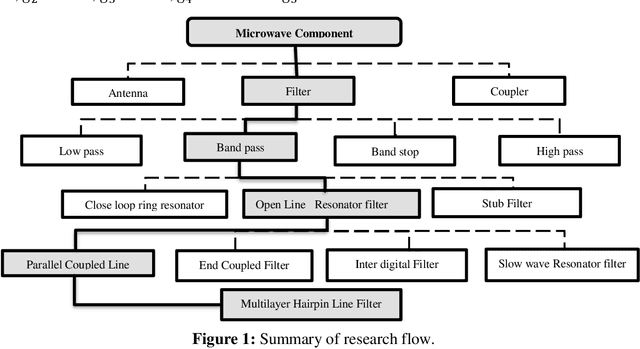

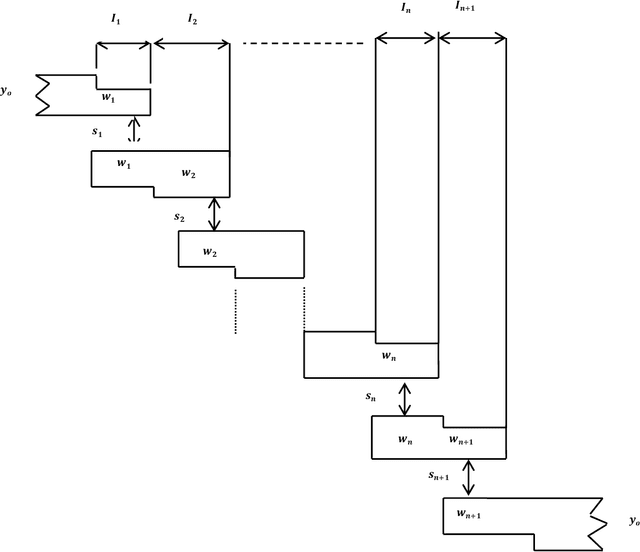
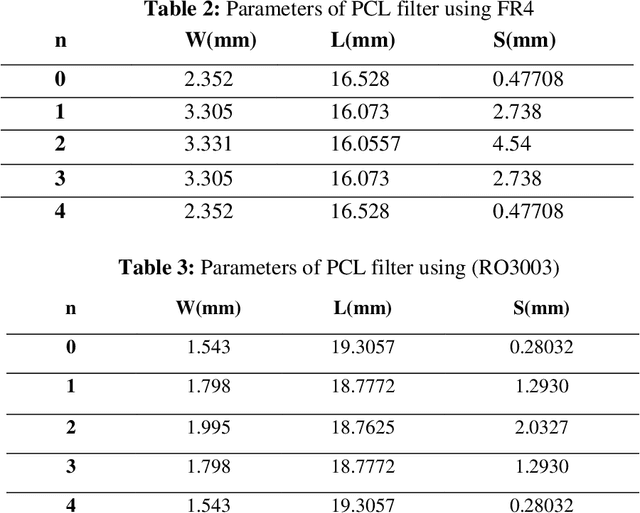
Abstract:The multilayer structure is a promising technique used to minimize the size of planar microstrip filters. In the flexible design and incorporation of other microwave components, multilayer band-pass filter results in better and enhanced dimensions. This paper introduces a microstrip fifth-generation (5G) low-frequency band of 2.52-2.65 GHz using a parallel-coupled line (PCL) Bandpass filter and multilayer (ML) hairpin bandpass filter. The targeted four-pole resonator has a center frequency of 2.58 GHz with a bandwidth of 130 MHz. The filters are designed with a 0.1 dB passband ripple with a Chebyshev response. The hairpin-line offers compact filter design structures. Theoretically, they can be obtained by bending half-wavelength resonator resonators with parallel couplings into a "U" shape. The proposed configuration of the parallel-coupled line resonator is used to design the ML band-pass filter. The FR4 substrate with a dielectric constant ({\epsilon}r) of 4.3 and 1.6 mm thickness was used. A comparative analysis between the simulated insertion loss and the reflection coefficient of substrates RO3003 and FR4 was performed to validate the efficiency of the proposed filter design. Simulation of PCL filter is accomplished using computer simulation technology (CST) and an advanced design system (ADS) software. The PCL Bandpass filter was experimentally validated and a total tally between simulation results and measured results were achieved demonstrating a well-measured reflection coefficient. The simulated results obtained by the hairpin ML bandpass filter show that the circuit performs well in terms of Scattering(S) parameters and the filter size is significantly reduced.
Pilot Contamination Elimination for Channel Estimation with Complete Knowledge of Large-Scale Fading in Downlink Massive MIMO Systems
Jun 25, 2021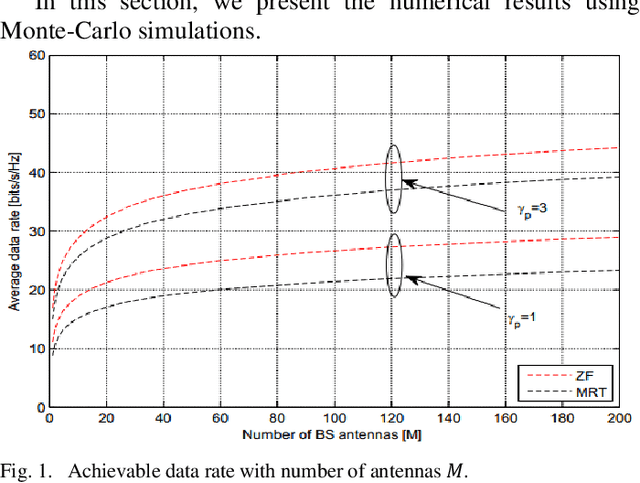
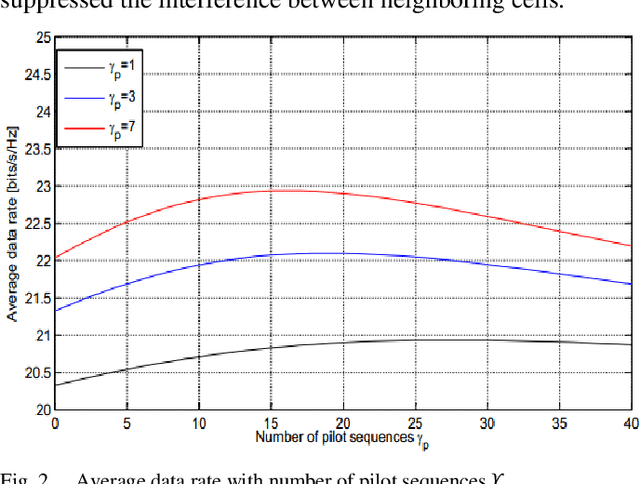
Abstract:Massive multiple-input multiple-output is a very important technology for future fifth-generation systems. However, massive massive multiple input multiple output systems are still limited because of pilot contamination, impacting the data rate due to the non-orthogonality of pilot sequences transmitted by users in the same cell to the neighboring cells. We propose a channel estimation with complete knowledge of large-scale fading by using an orthogonal pilot reuse sequence to eliminate PC in edge users with poor channel quality based on the estimation of large-scale fading and performance analysis of maximum ratio transmission and zero forcing precoding methods. We derived the lower bounds on the achievable downlink DR and signal-to-interference noise ratio based on assigning PRS to a user grouping that mitigated this problem when the number of antenna elements approaches infinity The simulation results showed that a high DR can be achieved due to better channel estimation and reduced performance loss
Real-time Autonomous Robot for Object Tracking using Vision System
Apr 26, 2021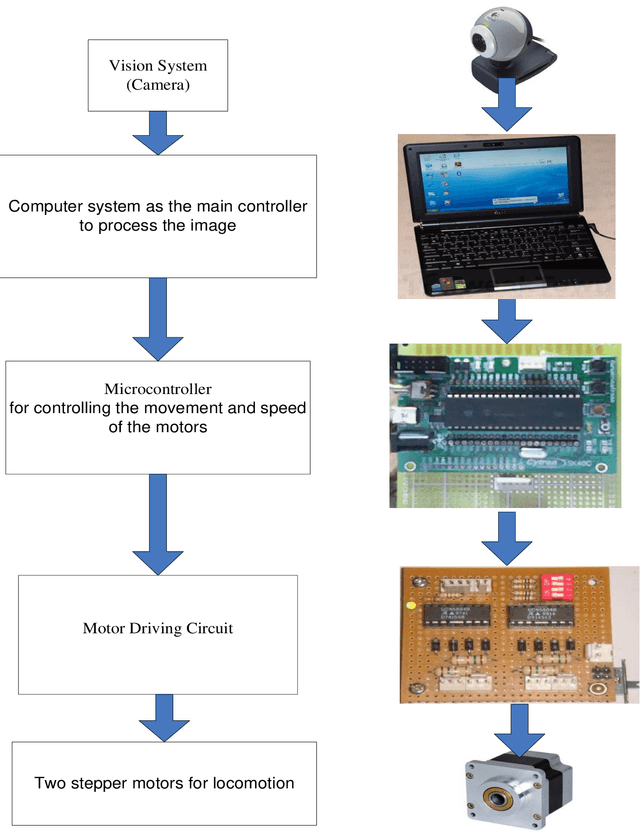

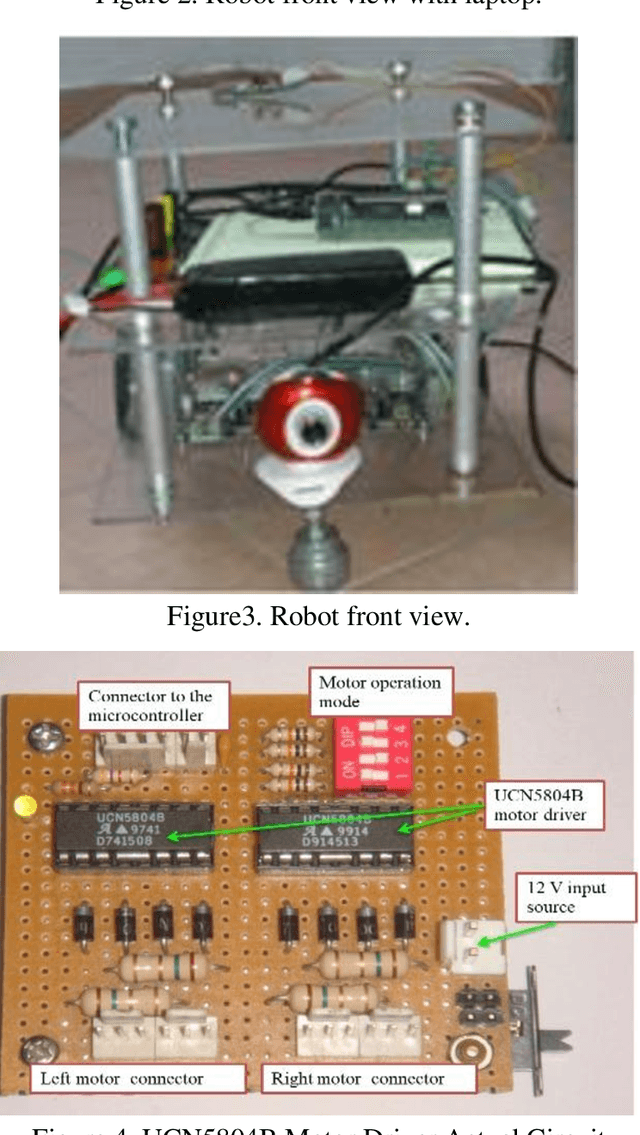

Abstract:Researchers and robotic development groups have recently started paying special attention to autonomous mobile robot navigation in indoor environments using vision sensors. The required data is provided for robot navigation and object detection using a camera as a sensor. The aim of the project is to construct a mobile robot that has integrated vision system capability used by a webcam to locate, track and follow a moving object. To achieve this task, multiple image processing algorithms are implemented and processed in real-time. A mini-laptop was used for collecting the necessary data to be sent to a PIC microcontroller that turns the processes of data obtained to provide the robot's proper orientation. A vision system can be utilized in object recognition for robot control applications. The results demonstrate that the proposed mobile robot can be successfully operated through a webcam that detects the object and distinguishes a tennis ball based on its color and shape.
Distributed Clustering for User Devices Under Unmanned Aerial Vehicle Coverage Area during Disaster Recovery
Mar 14, 2021



Abstract:An Unmanned Aerial Vehicle (UAV) is a promising technology for providing wireless coverage to ground user devices. For all the infrastructure communication networks destroyed in disasters, UAVs battery life is challenging during service delivery in a post-disaster scenario. Therefore, selecting cluster heads among user devices plays a vital role in detecting UAV signals and processing data for improving UAV energy efficacy and reliable Connectivity. This paper focuses on the performance evaluation of the clustering approach performance in detecting wireless coverage services with improving energy efficiency. The evaluation performance is a realistic simulation for the ground to air channel Line of Sight (LoS). The results show that the cluster head can effectively link the UAVs and cluster members at minimal energy expenditure. The UAVs altitudes and path loss exponent affected user devices for detecting wireless coverage. Moreover, the bit error rate in the cluster heads is considered for reliable Connectivity in post disaster. Clustering stabilizes the clusters linking the uncovered nodes to the UAV, and its effectiveness in doing so resulted in its ubiquity in emergency communication systems.
 Add to Chrome
Add to Chrome Add to Firefox
Add to Firefox Add to Edge
Add to Edge